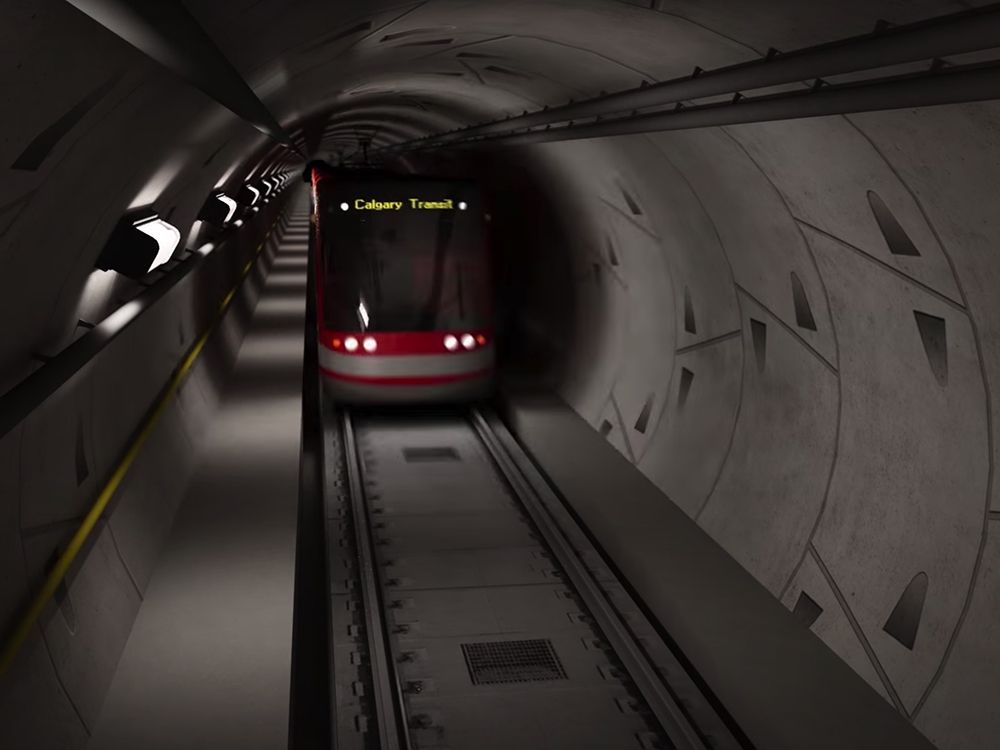whatchyyc
Active Member
just throw in some vending machines in the downtown stations I don't think there's a real need for an entire booth

Be curious to see if Danielle Smith clarifies her comments now that this article has been published.

Smith criticized for raising concerns about UCP-approved Green Line tunnel
Premier Danielle Smith said the initial south phase is 'absolutely needed' but there could be further discussion about future phasescalgaryherald.com
Then again this tweet by Rachel Notley reminded me not to hold my breath...
Is cost the only consideration though? My experience in this area is really only travelling outside of North America, but my favorite transit systems all have businesses and washrooms integrated into the transit hubs. Until we start to look at more of this, we're admitting that we really only care about cars.Negative for Calgary Transit. In the last year in the 90s, total lease and tax revenue from the private operator to Calgary Transit was ~$130,000 for 11 koisks. IIRC, the city tried to run them itself, lost money, and they were closed for good, and renovated away. A big issue was the expense to maintain washrooms/other utilities needed for someone to be there all day. That isn't even thinking about the cost to build the spaces in the first place!
In parts of the world transit is run as a service instead of as a business. Here because it's a business if something (example: CRU's on platforms) doesn't make money it doesn't stick aroundIs cost the only consideration though? My experience in this area is really only travelling outside of North America, but my favorite transit systems all have businesses and washrooms integrated into the transit hubs. Until we start to look at more of this, we're admitting that we really only care about cars.
Disclaimer: I don't actually use Calgary Transit in my daily life so I'm not really the target market anyways.
In parts of the world, transit is run as a business rather than a service. Here, because it's a service, there's no incentive to develop and intensify the land use and therefore potential customer base at station areas, since the land value goes to the private sector.In parts of the world transit is run as a service instead of as a business. Here because it's a business if something (example: CRU's on platforms) doesn't make money it doesn't stick around
Is cost the only consideration though? My experience in this area is really only travelling outside of North America, but my favorite transit systems all have businesses and washrooms integrated into the transit hubs. Until we start to look at more of this, we're admitting that we really only care about cars.
The term "worthwhile" is a bit troubling to me, as it doesn't seem to consider the cost side of the equation. Hyperbole, I know, but what if it cost $100 billion to achieve those extensions? Would it still be "worthwhile"? I know it won't be that much, so how about $50 billion? Probably still too exagerated.... $20 billion? I'd say might be on the high end, but now it is starting to enter the realm of possibility..... Still worthwhile? Think of what we could build as a city with $20 billion. Is the Greenline better than all of those other options?The Red and Blue lines are successful in part because the routes have destinations to which people want to travel, whether it be work, home, or entertainment. The Green Line’s first phase may seem like a waste of money, because frankly I don’t think Shepard is a hugely popular destination. But once it gets to Seton and the Hospital, and then up Centre Street, then it will start to look and feel like a route that is worthwhile. These things take time, and because there is no Olympics or other major event planned to hurry along the construction, it will sadly be at least a decade before we see the true potential for the Green Line.
We shouldn't need to ask which to prioritize and the reason we do is constituents questioning spending money on a line that may not deliver maximum ridership but does bring high order transit to areas of the city where there aren't any.. Do we think that everyone of the 20 odd spokes from downtown Munich to suburbia was built with maximum ridership in mind? I would guess some were built to provide everyone fast service within 5 kilometres.
I'd probably go with bringing high order transit to areas of the city over burying the downtown section. The downtown loop will have to upgraded at some point regardless of a future shift in attitude away from transit or other transit initiatives needing funding